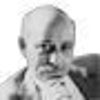At the moment, Germany is embroiled in a fierce debate over how to save the Eurozone and, with it, the future of the European Union. Although stringent austerity programs will have to be enacted in the member countries to reduce government debt, and new regulatory mechanisms put in place to oversee European financial institutions and markets, there is a dawning realization that these measures alone will be insufficient to assure the future of Europe and its member states. What's required, above all else, is a new sustainable economic growth plan that can take Europe into the future. That's beginning to happen.
While the rest of the world is in a near panic over the prospect of a second collapse of the global economy, a fresh new economic wind is blowing across Germany. In discussions with German business leaders over the past several months, and in recent conversations with Chancellor Angela Merkel and key political leaders in Berlin, it has become clear that Germany is embarking on a journey into a new economic era. The German plan is based on the historical understanding that the great economic paradigm shifts in history occur when new communications revolutions converge and merge with new energy regimes. New energy revolutions make possible more expansive and integrated trade. Accompanying communication revolutions manage the speed and complexity of commercial activity made possible by the new flow of energy. Today, the distributed Internet communication revolution is converging with distributed renewable energies, giving birth to a powerful Third Industrial Revolution that is going to fundamentally change German society.
The Merkel administration has launched an ambitious effort to transition the West's leading exporting power into a Third Industrial Revolution (TIR). The federal government has teamed up with six regions across Germany to test the introduction of an "energy Internet" that will allow tens of thousands of German businesses and millions of home owners to collect renewable energies onsite, store them in the form of hydrogen, and share green electricity across Germany in a smart utility network, just like we now share information online. Entire communities are in the process of transforming their commercial and residential buildings into green micro-power plants, and companies like Siemens and Bosch are creating sophisticated new IT software, hardware, and appliances that will merge distributed Internet communications with distributed energy to create the smart buildings, infrastructure, and cities of the future.
The transition into the new Industrial Revolution is quickly picking up momentum. In May, the government announced that the country's 17 nuclear power plants would be shut down by 2022. Then, in late summer, the German Association of Energy and Water Companies reported for the first time that renewable energy sources now account for nearly 20% of the country's electricity, putting Germany ahead of schedule in its goal of producing 35% of its electricity from green energy by 2022. On September 12th, Dr. Dieter Zetsche, the Chairman of Daimler, unveiled the company's hydrogen fuel-cell car at the opening of the Frankfurt International Auto Show. The company that launched the Second Industrial Revolution 125 years ago with the invention of the gasoline-powered automobile has joined with seven industrial partners -- EnBW, Linde, OMV, Shell, Total, Vattenfall, and the National Organization of Hydrogen and Fuel Cell Technology -- in a partnership to establish hydrogen fueling stations across Germany in preparation for the mass production of zero-emission fuel cell vehicles in 2015, signaling the beginning of the post-carbon auto era and a Third Industrial Revolution.
The creation of a renewable energy regime, loaded by buildings, partially stored in the form of hydrogen, distributed via an energy internet, and connected to plug-in zero-emission transport, establishes the essential 5-Pillars of a Third Industrial Revolution. The forty year build out will create thousands of businesses and millions of sustainable jobs and position Germany as the leader in the next industrial revolution.
Germany's ability to export the new model throughout the European Union and in its partnership regions in the Mediterranean, North Africa, and beyond, will set the framework for the next great stage of European integration, and ultimately determine whether the European political experiment and the European Dream succeeds or fails.
The opportunity is clear. The European Union has 500 million consumers and an additional 500 million potential consumers in its partnership regions, giving it the prospect of becoming the largest and wealthiest internal commercial market in the world. The key is creating a seamless green energy infrastructure, electricity grid, and communication and transport network that will allow one billion people to engage in "sustainable" commerce and trade across the European continent and its periphery. This represents the next stage of European integration as a political union.
In May 2007, the European Parliament issued a formal written declaration endorsing the Third Industrial Revolution (TIR) vision as the long-term economic road map for the European Union. The Third Industrial Revolution is currently being implemented by the various agencies within the European Commission as well as in the member states.
Now, Germany, the economic engine of the European Union, has set out on a course to quickly transform its economy into the new economic paradigm and serve as a lighthouse for moving the Third Industrial Revolution infrastructure across the European space. To the extent that Germany can effectively create a sustainable and prosperous post-carbon Europe and transform the continent into the largest integrated market space in the world, Germany will prosper, and the European Union will come of age. Other continental markets and continental unions in Asia, Africa, and the Americas will likely follow suit.
The world community will be watching the German experiment closely to see whether this new economic model can serve as a template for ushering in a new economic era. Germany's future, as well as Europe's and the world, depends on its success. Jeremy Rifkin is the author of The Third Industrial Revolution: How lateral Power is Transforming Energy, the Economy, and World.
